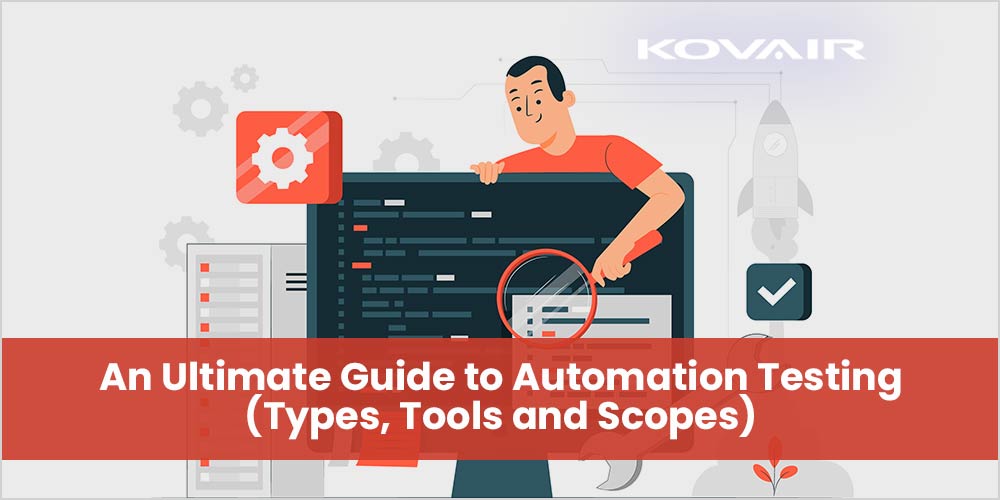Great products are the result of persistent development and rigorous testing. Today, testing is critical for enterprises to gain leadership, profitability and end-user satisfaction. They demand a strategic approach and an early involvement of testing for quality, automation, predictability and cost reduction.
Testers Need to Contribute to the Process of Agility
With increasing competition and the need for early to market, agility has become inevitable today. The idea of agility has also pushed testing to gain a new maturity level through a cultural shift in testing practices. Not only agility, but these factors are also pushing organizations for adoption of DevOps practices where all teams of development, testing and operations need to work together. These cultural shifts in the software development process have made the life of a tester more challenging as given below:
- Shorter ROI cycles
- Different IT platforms, languages, and systems are getting used for development
With all these changes, testing is now getting introduced much earlier in the development phase. Practices like automation at every stage, continuous integration – CI, continuous deployment – CD, have now become the need of the hour.
Automation is the Need of the Hour
With time, the need for getting quickly to the market has enforced test automation to be included in the early stages of a development process. More and more organizations are realizing the importance of writing test code or scripts similar to that of writing development codes. Different frameworks and tools are also getting introduced so that testers can get maximum leverage. This entire process of test automation has shortened the cycle of regression testing, making the entire flow of CI, CD, and DevOps extremely efficient.
Why an Integrated Testing Solution?
An Integrated Test Management framework equipped with multi-tool integration capabilities can support continuous integration, automated triggering of build, automated testing and results reporting, ensuring continuous delivery, and rapid deployment practices – the road maps to achieve DevOps.
A typical Integrated Testing platform should provide the following major advantages to the entire development process of the organization.
- Enabling globally distributed teams to work on a single source of information
- Tight integration with other modules of ALM
- Complete support for test automation through integrations with tools like QTP & Selenium
- Integration support with most popular manual testing tools like HP QC, IBM Rational Quality Manager, and Test Link
- Generation of different cross tool metrics and cross-tool end-to-end traceability reports
- Managing impacts across tools
- Workflow based automatic triggering of both manual and automated test cases from the testing platform
- The capability of implementing DevOps with the existing tools by a typical process workflow as shown in the figure below.

Example DevOps Scenario in an Organization
An organization uses ITSM tool for managing support tickets submitted by customers. On Ticket submission, they get automatically passed to an ALM tool for internal development as User Stories or Defects. On allotting to a sprint, developers and testers view them from IDE, SCM and test tool. Once coding is complete and codes get checked in at an SCM tool, an automatic build gets triggered using Build tool. Upon successful completion of the build, it can be automatically deployed using deployment tool and automated tests can be executed through a test automation tool. Test results can be captured and linked to the test cases. Defects get raised in a defect tracking tool for those failed test cases can be integrated through an integration hub.
While connected to an integrated testing platform, users get complete visibility of test related records and their interrelationships from within their own tools, thus achieving CI and CD. Developers, testers and help desk manager get complete traceability of the development artifacts as well as an automatic update for any internal progresses by other teams – thus providing real-time collaboration among cross-functional teams.
Request for Free Live Product Demo from our Engineers!



A really informative blog keep sharing your knowledge with us. The best thing about your blog is easy to understand language. Keep up the good work.
Thank you for your post. This is excellent information. It is amazing and wonderful to visit your site.
The posts look better and better every time I visit it. What have you done with this place to make it so amazing?!
I really can’t believe how great this site is. Keep up the good work. I’m going to tell all my friends about this place.
Hello there, just became alert to your blog through Google, and found that it is truly informative. I am gonna watch out for brussels. I’ll be grateful if you continue this in future. Lots of people will be benefited from your writing. Cheers!
Some really nice and useful info on this site, as well I think the design and style contain excellent features.
Hello! Would you mind if I share your blog with my twitter group? There’s a lot of people that I think would really appreciate your content. Please let me know. Thank you.
Sure…